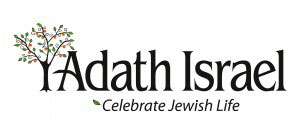“Acharei Mot,” means “after the death of”
“Kedoshim,” means “holy”
Following the deaths of Nadav and Avihu, God warns against unauthorized entry “into the holy” – this is a place, inside the tabernacle in our story and later, inside the Temple, where incense is offered. Only one person, the kohen gadol may, once a year, on Yom Kippur, enter the innermost chamber in the Sanctuary to offer the incense. The rest of the reading is the description of Yom Kippur in the Tabernacle, with the two goats, and we read that on Yom Kippur morning.
The Parshah of Kedoshim begins with the statement: “You shall be holy, for I, Ad-nai your God, am holy.” This is followed by many mitzvot through which a Jewish person enters in this holy relationship with God. Kedoshim is famous because of one line: “Love your neighbor…”
==
Recently I learned with R. Jeni Friedman that philosophical and ethical concepts can be either thin or thick, depending on how we use them.
One example is “good”. When we say “oh, he’s such a good person” – this is a thin concept, because there is no real description behind this “good”. It is very different if I say “he’s courageous”, because courage is a thicker, more define, concept than just “good”. If I say “he’s good, he’s generous with his time” I am providing you with a thickening of this general, undefined “good”.
Holiness, I think, works the same way as “good”. We don’t think about what being holy means, as we are pretty far away from the times when the Torah was written and feel even farther away from God.
Reading the text of Kedoshim, that begins with “you shall be holy because I, Ad-nai your God am Holy”, we have a progressively thickening of this concept. Firstly, there is not being holy only internally, without an action that brings about holiness in the external world. This is the first and most important piece: a person needs to act. Holiness is not a given, holiness is not a inherent quality of anyone, and cannot be achieve without effort. The parsha, which is fairly short, has 51 mitzvot, which is a fair amount in the total number of mitzvot.
The mitzvot described in our portion are either acts between us and God, or between us and other people. We, moderns, would imagine that if the Torah is talking about holiness it will inevitably focus on what we call ritual actions, but that is not so. The very first action in the list offered by Kedoshim is to revere parents – the rabbis will expand this to any parental figure you had in your life, not just a mother and a father. So shout out to the mothers and mother figures out there! Now, we all agree I believe that we would say that this is a mitzvah that is between people. You can’t revere your parents or parental figure if you are alone in an island.
Many mitzvot that are found in the Torah need us to be in contact with others to actualize those mitzvot.
And yet, in the same line, in the same sentence that we read about revering parents, we read that we are supposed to keep Shabbat. Now that one, we all agree, can be done without someone around: it can be actualized alone in a remote island. It is with those two mitzvot that this section telling us how to be holy opens: you need both mitzvot with God and mitzvot with people for this project.
And yet, if you go around counting and separating the mitzvot only on those two categories, you have 32 mitzvot between people and 19 between us and God. The clear weight of holiness is as we act with each other. Holiness, in Judaism, cannot be achieved alone: every person you meet is a portal for you to find the path of holiness. To be holy is a path of the everyday, it is not a path for the saintly person living alone at the top of the mountain.
By not lying, by refraining from gossip, by having honest weights and measures, by treating the stranger as you would treat yourself, because, says the text, you know how oppressed a stranger is, given that you were strangers in Egypt. By giving tzedakah to the poor, by supporting those who have less than you, by paying your workers on time, by not embarassing anyone. All those are examples from our text, all those are moments when we progressively become holy.
The crowning glory of Kedoshim is “love your neighbor as yourself”. Very famous sentence, repeated everywhere. Less famous is what the rabbis will do with it: love your neighbor – act lovingly towards those around you, whether in your home or in the market. Because for Judaism, love cannot be just a feeling, it is not enough for it to be inside, love has to come outside, out of the closet of our hearts, in all its glory to the outside, to the other.
The same happens with holiness: we have to act towards the other in holiness, and then we will achieve this level. It is Maimonides who will insist that we have to pay an enormous attention to what we do because, he says, we become what we habitually do. To be holy, says the Torah, we need people around us. We need community. We need to engage with one another. We need to give to others, without expecting to be repaid. Holiness, for such a lofty concept, is actually in our hands.
Shabbat Shalom.
==
Shabbat morning:
Look at the mitzvot we will be reading as part of the holiness code. Besides positive and negative, how else can you divide them?
[Between people and people, between God and people, between people and the land (orla), between people and themselves (cutting skin for the dead)
